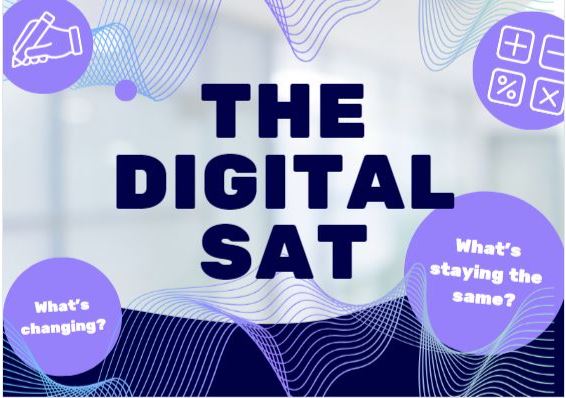Beginning this October, the PSAT will retire from its tradition of being a handwritten test and will become fully digital. The PSAT is marked as a transition point for students who are prepared to take the actual SAT in spring, as the exam will be administered digitally beginning in March of 2024.
Many changes are brought on from the format, including the total time of the test being reduced by a third, the non-calculator math section being completely removed, and reading passages only consisting of 100 words or less. Regardless of the differences, many students still seek guidance and preparation. One Austin-based company that specializes in SAT preparation is More Than A Teacher.
“[Rouse has] a wide array of students,” MTAT College Advisor and Academic Instructor Kim Parker-Lewis said. “If this digital test can help both the students who are already successful, but also the students who might be on the borderline of failing out, then [getting] those higher scores may encourage them because then they don’t have to take the TSI. They [can] show college readiness, and I think that’s really helpful for everyone. Not just for college prep, but even just for graduating high school.”
The goal of the new test is to facilitate the knowledge students already have by providing a cleaner, adjustable format.
“I [took] the digital SAT back when we were learning more about it and I found the format to be a lot easier because everything was right in front of me on the screen,” Princeton Review Outreach Specialist Jess Alexander said. “I was able to focus my energy more on the questions and answering them correctly. For me, it worked really well.”
The exam employs a series of useful tools that will be included for students to use throughout their test. For example, students will be able to digitally annotate passages for reading, and use the Desmos graphing calculator for mathematics.
“The graphing calculator is the biggest benefit to this test,” Parker-Lewis said. “We are here to teach you how to beat the test. We want to teach you all the tips and strategies so that way you’re not just relying on your own skills, and you actually have insight into what’s going to make the questions easier for [you]. The Desmos graphing calculator is the key to doing more than half of the math questions. We’re teaching students to use their calculator, and it’s amazing. It’s really helping.”
The digital exam will also become a “stage adaptive” test, meaning that each student will have questions given to them based on their performance as the test continues. The will be split into four sections, two for reading & writing, and another two for math. The difficulty of the final section is fully dependent on the performance the student has in the first one. Despite there being concerns from parents and teachers about the adaptive format, it’s proven to be beneficial to students who find themselves scoring in between high and low-achieving students.
“What I’ve seen in action since June is that students who are in the middle, (students who are scoring from 1000-1100) are seeing on average about a 100 point improvement,” Parker-Lewis said. “That’s what we want. I don’t think that the adaptive nature is punishing the students in the middle for not being perfect, or giving them an easier test. I do really think it’s helping students at all levels. The adaptive nature of the test really does make it better for [those] who struggle with specific concepts.”
The adjustment doesn’t come without downsides, though. In an increasingly digital age, some young test-takers are prone to overlooking important details and not maintaining full attention spans.
“All too often, some students will do too much mental math, and that’s when [they] make a careless mistake,” Parker-Lewis said. “It’s easy for the details to slip through the cracks. The SAT has always been a test where [students] have to pay attention to the details, and if [they] don’t, then that’s when [they] fall for a trap.”
Additionally, while all accommodations are currently accounted for, following through with some of those requirements means that certain students will receive a completely different test.
“Some students who need accommodated testing are having to take a paper test anyway, which means that they unfortunately have to take a longer test,” Parker-Lewis said. “That’s not awesome. It’s [unfortunate] that in order to give a student a test that fits their brain, they have to take a longer test. So that’s not ideal, but that’s also not everyone.”
Despite the adjustments students will have to make, practice and preparation will still be a crucial aspect of ensuring a student’s comfortability and success on the test day.
“College Board, the people who write the SAT, are continuing to provide really excellent resources as far as practicing these tests beforehand,” Parker-Lewis said. “The number one test prep strategy is practice. Students who feel nervous about taking the digital SAT for the first time don’t have to feel as nervous if they try a digital practice test beforehand.”


